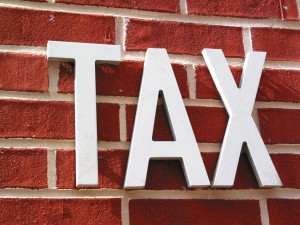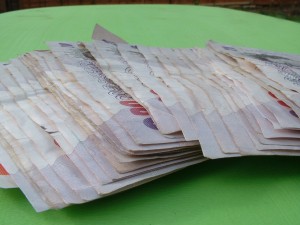 What taxes you may have to pay as a sole trader?
What taxes you may have to pay as a sole trader?
1. Income tax
As a sole trader, your business profits are taxed as trading income. This means you have to complete a Self Assessment tax return every year.
You need to register for Self Assessment. This means that HM Revenue & Customs will be able to set up the right records for you. You need to register as a sole trader even if you are also still an employee and are paying tax through PAYE.
Ideally you should register with HMRC as soon as possible after you become self employed, however the latest you can register is 6 months after the end of the tax year (which runs from 6 April to 5 April) when you became self employed. E.g. if you set up as a sole trader in January 2011, you have to notify HMRC by 5 October 2011.
If you register late then you may be liable to pay penalties.
Income tax rates for the 2011 to 2012 tax year are as followsignoring the starting rate for savings:
- Personal allowance £7,475 aged 64 and below, which is gradually reduced where income is above £100,000
- Basic rate 20% on £0 – £37,400
- Higher rate 40% on £37,401 – £150,000
- Additional rate 50% over £150,000
2. Class 2 National Insurance Contributions (NICs)
As a sole trader, you are also liable to pay Class 2 NICs.
Class 2 NICs are paid at a flat rate of £2.50 per week (2011-12 tax year). They count towards some benefits, such as the basis State Pension, and Maternity Allowance.
If you register for Self Assessment then you can get set up for income tax and Class 2 NICs at the same time.
You can either pay your Class 2 NICs monthly or 6 monthly (by 31 January and 31 July) by direct debit.
If your profits are less than £5,315 (2011-12 tax year) per year then you can apply for the Certificate of Small Earnings Exemption which means you do not have to pay Class 2 NICs, although you should consider what impact this would have on your entitlement to state benefits.
3. Class 4 NICs
If you make annual profits of more than £7,225 (2011-12 tax year) then you also become liable for Class 4 NICs.
Class 4 NICs are paid based on 9% of your profits between £7,225 and £42,475 (2011-12 tax year) and 2% on any profits above £42,475.
Class 4 NICs are calculated with your income tax on your Self Assessment tax return, and paid together with your income tax.
4. Payments on account
 After you have been self employed for a year, you may be required to make advance payments for your income tax and Class 4 NICs – these are called payments on account.
After you have been self employed for a year, you may be required to make advance payments for your income tax and Class 4 NICs – these are called payments on account.
A payment on account is a payment made based on an estimate of your tax payable for the next year. You usually pay this in 2 installments, on 31 January and 31 July.
This means that 31 January after your first year of trading you may have to pay (a) your tax due from your first year of trading, plus (b) half of the estimated tax due from your second year of trading – somake sure you know in advance how much you may owe so you can set some funds aside!
5. Actions
- Have you notified HMRC that you are a sole trader?
- Do you know how much tax you owe HMRC, and when you need to pay it?
- Do you understand the impact of having to make payments on account?
If you have questions then please post a comment and I will respond as soon as possible – or contact me.


